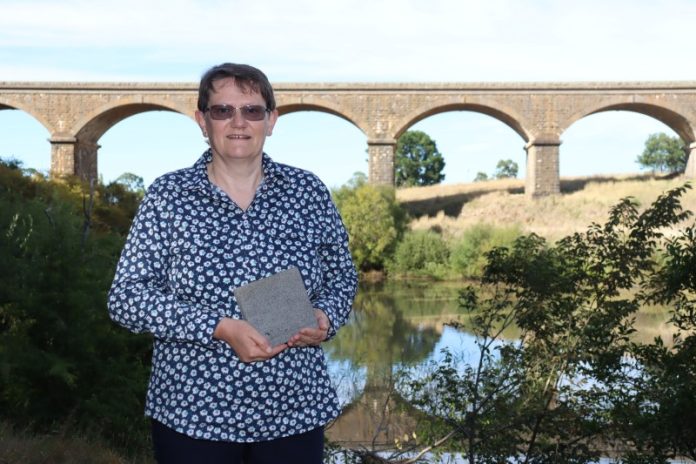Malmsbury bluestone has become the first Australian stone recognised as a Global Heritage Stone Resource.
The rare designation is reserved for stones with documented widespread use in human culture for more than 50 years.
To be considered, stones must have been used in several continents for significant, private, public and industrial projects, and have recognised cultural significance.
The feat has been 10 years in the making for historian, Dr Susan Walter, who made it her mission to uncover the stone’s significance.
“It’s a major achievement for a little local town,” Dr Walter said.
The now Malmsbury Historical Society president moved to Malmsbury in 2002 and with a background in science and history was fascinated to hear local references to the bluestone.
“People told me that Malmsbury bluestone was famous, but they couldn’t explain how,” she told the Express.
Dr Walter decided she would uncover its past herself with it forming the subject of her history PHD thesis. Her discoveries took her much further than anticipated.
She learned Malmsbury bluestone had been used in Victoria, Tasmania, South Australia, Western Australia and New South Wales. She also discovered various uses overseas including New Zealand and Calcutta, India.
Dr Walter said the stone defines a lot of the Macedon Ranges. The Malmsbury viaduct is an important early example of its use and is what may have triggered interest in the stone.
She said the durability and workability of the stone made it suitable for a wide range of purposes, from drains, kerbs, pavements, lintels and steps, to base courses of multi-storey buildings and ornate bank doorways.
St Patricks Cathedral and St Pauls Cathedral in Melbourne are just some examples of its use.
Dr Walter completed her PHD in 2019 and nominated the stone for Global Heritage Stone Resource status.
The International Union of Geological Sciences accepted the Malmsbury bluestone recommendation of their Heritage Stones Sub-commission. It was approved in February and now joins nearly 50 stones world-wide with this recognition.
The IUGS has requested a sample of the stone for the Institute for Geosciences and Natural Resources in Berlin, Germany.
Dr Walter has been able to source a sample with the help of an owner of one of the former bluestone quarries and Kyneton stonemason Huntly Barton.
The sample will be added to the museum’s 150-year-old collection of natural building stones.
While many Malmsbury bluestone sites have been demolished over time, those that remain are important reminders of the past.
Dr Walter hopes the stone’s world recognition will be a catalyst for new historical studies, improved documentation of its use and heritage protection.
Her research has uncovered more than 150 uses of the stone across the Macedon Ranges.
Entries vary from basic farmhouses to other uses like railway bridges, station platforms, hotels and churches.
Some examples have protection, some do not, but Dr Walter said many shire documented cases didn’t recognise the bluestone at all.
“The basic level of heritage protection, which protects some of the surviving structures, doesn’t even acknowledge the bluestone’s presence,” she said.
“Our stone is something we can all be proud of and deserves both preservation and celebration.”
Dr Walter has shared her findings with Macedon Ranges Shire Council.
Malmsbury Historical Society is celebrating Malmsbury bluestone’s recognition in the Global Heritage Stone Resource list with planned history tours in April.
The tours will be a chance for people to learn more about the history and uses of the famous bluestone.









